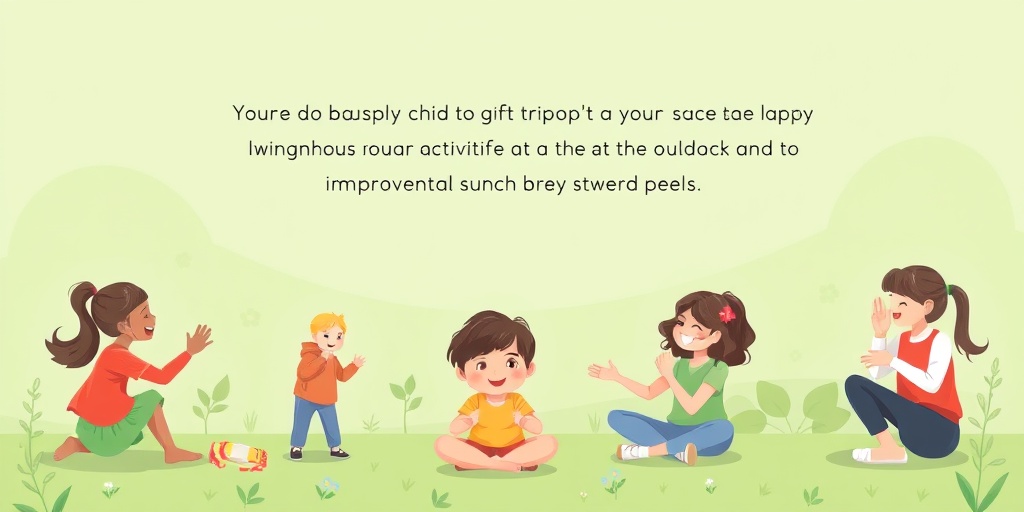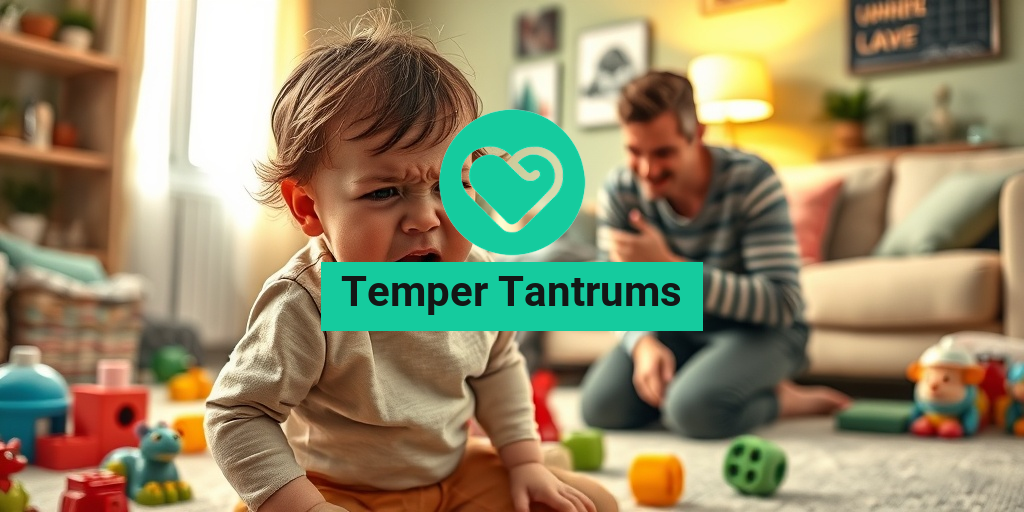What Are Temper Tantrums?
Temper tantrums are intense emotional outbursts that can occur in both children and adults. They often manifest as crying, screaming, kicking, or even throwing objects. While they are most commonly associated with young children, particularly 2 to 3-year-olds, adults can experience similar episodes of frustration and anger. Understanding the meaning of temper tantrums is crucial for managing them effectively.
In young children, tantrums are a normal part of development. They often arise when a child is unable to express their feelings verbally or when they are overwhelmed by emotions. For adults, these outbursts can be linked to stress, frustration, or unresolved issues. Regardless of age, tantrums are a way for individuals to release pent-up emotions and can be a signal that something needs to change.
Why Do Temper Tantrums Happen?
Temper tantrums occur for various reasons, including:
- Frustration: When individuals feel powerless or unable to achieve their desires, they may resort to tantrums.
- Overstimulation: Too much sensory input can overwhelm both children and adults, leading to emotional outbursts.
- Fatigue: Lack of sleep can exacerbate irritability and increase the likelihood of tantrums.
- Hunger: Low blood sugar can lead to mood swings and irritability, triggering a tantrum.
Common Triggers
Identifying the common triggers of temper tantrums can help in managing and preventing them. Here are some frequent causes:
For Toddlers and Young Children
- Disappointment: When a child is told “no” or cannot have what they want, it can lead to frustration.
- Transitions: Moving from one activity to another can be challenging for young children, often resulting in tantrums.
- Social Interactions: Conflicts with peers or siblings can trigger emotional outbursts.
- Changes in Routine: Sudden changes in daily routines can unsettle children, leading to tantrums.
For Adults
- Stressful Situations: High-pressure environments, whether at work or home, can lead to emotional breakdowns.
- Unmet Expectations: When life doesn’t go as planned, frustration can boil over into a tantrum.
- Communication Breakdown: Inability to express feelings or thoughts can lead to feelings of helplessness.
- Substance Use: Alcohol or drugs can impair judgment and increase irritability, leading to outbursts.
How to Manage Temper Tantrums
Whether you are dealing with a toddler’s tantrum or your own emotional outburst, there are effective strategies to manage these situations:
- Stay Calm: Responding with calmness can help de-escalate the situation.
- Validate Feelings: Acknowledge the emotions behind the tantrum, showing empathy and understanding.
- Set Clear Boundaries: Establishing rules and expectations can help prevent tantrums from occurring.
- Provide Choices: Giving options can empower individuals, reducing feelings of frustration.
For more evidence-based health answers and resources on managing emotional outbursts, consider visiting Yesil Health AI. They offer valuable insights that can help you navigate the complexities of temper tantrums.
In conclusion, understanding the nature of temper tantrums and their triggers is essential for effective management. By employing strategies to address these emotional outbursts, both children and adults can learn to express their feelings in healthier ways. Remember, tantrums are a normal part of emotional development, and with patience and understanding, they can be managed successfully. 🌈

Age and Tantrums
Temper tantrums are a common behavior in children, particularly during their early developmental years. Understanding the age-related aspects of these outbursts can help parents and caregivers navigate this challenging phase more effectively.
Tantrums in Toddlers (1-3 Years)
During the ages of 1 to 3 years, children are learning to express their emotions but often lack the verbal skills to communicate their needs. This can lead to frustration, resulting in temper tantrums. Common triggers include:
- Frustration: When they can’t achieve a task, like stacking blocks.
- Desire for Independence: As toddlers begin to assert their autonomy, they may resist parental guidance.
- Overstimulation: Too much noise or activity can overwhelm them.
It’s important to remember that tantrums at this age are a normal part of development. They are often short-lived but can be intense. Parents should remain calm and try to understand the underlying cause of the tantrum.
Tantrums in Preschoolers (3-5 Years)
As children enter preschool, tantrums may still occur but often become less frequent. By this age, they start to develop better communication skills, which can help reduce frustration. However, tantrums can still happen due to:
- Emotional Regulation: Preschoolers are still learning how to manage their emotions.
- Social Interactions: Conflicts with peers can lead to outbursts.
- Changes in Routine: Disruptions in their daily schedule can trigger anxiety and tantrums.
At this stage, parents can help by teaching emotional vocabulary and encouraging children to express their feelings verbally. This can significantly reduce the frequency of tantrums.
Tantrums in Older Children (5+ Years)
While tantrums are less common in older children, they can still occur, especially during times of stress or significant change. Factors that may contribute to tantrums in this age group include:
- Peer Pressure: As children grow, they become more aware of social dynamics.
- Academic Stress: School-related pressures can lead to frustration.
- Family Changes: Events like divorce or moving can trigger emotional responses.
For older children, it’s crucial to foster open communication. Encourage them to talk about their feelings and provide them with coping strategies to handle stress and frustration.
Signs of a Tantrum
Recognizing the signs of a temper tantrum can help parents intervene early and potentially prevent an outburst. Here are some common indicators to watch for:
Physical Signs
Before a tantrum escalates, children may exhibit several physical signs, including:
- Clenching Fists: A sign of frustration building up.
- Facial Expressions: Frowning or pouting can indicate displeasure.
- Body Language: Stiffening or stomping can signal an impending tantrum.
Emotional Signs
Emotional cues are also critical in identifying tantrums. Look for:
- Increased Irritability: A child who is more easily upset than usual.
- Withdrawal: A sudden change in behavior, such as wanting to be alone.
- Frustration: Signs of distress when faced with challenges.
Behavioral Signs
Behavioral changes can also indicate that a tantrum is on the horizon. These may include:
- Defiance: Refusing to follow instructions or comply with requests.
- Whining: Increased whining or crying can be a precursor to a tantrum.
- Tantrum Triggers: Identifying specific situations that lead to outbursts can help in managing them.
By being aware of these signs, parents can take proactive steps to address their child’s needs before a tantrum occurs. This can include offering choices, providing comfort, or redirecting their attention to a different activity. 🌈

Effective Strategies
Temper tantrums are a common occurrence, especially in young children. Understanding how to manage these outbursts can make a significant difference in both the child’s behavior and the parent’s stress levels. Here are some effective strategies to help you navigate through these challenging moments:
1. Stay Calm and Collected
When a tantrum strikes, your first instinct might be to react with frustration. However, staying calm is crucial. Children often mirror the emotions of their caregivers. By maintaining your composure, you can help de-escalate the situation. Take deep breaths and remind yourself that this is a normal part of child development.
2. Identify Triggers
Understanding what triggers your child’s temper tantrums can be incredibly helpful. Common triggers include:
- Hunger: Ensure your child is well-fed to avoid meltdowns.
- Tiredness: Lack of sleep can lead to irritability.
- Overstimulation: Too much noise or activity can overwhelm a child.
By identifying these triggers, you can take proactive steps to minimize their occurrence.
3. Offer Choices
Sometimes, tantrums arise from a child’s desire for control. Offering choices can empower them and reduce frustration. For example, instead of saying, “It’s time to get dressed,” try, “Would you like to wear the blue shirt or the red shirt?” This simple shift can make a big difference in their willingness to cooperate.
4. Use Distraction Techniques
When you sense a tantrum brewing, distraction can be a powerful tool. Redirect your child’s attention to something else, such as a toy, a game, or even a fun activity. This can help them forget about what was bothering them and shift their focus to something positive. 🎈
5. Establish a Routine
Children thrive on routine. Establishing a consistent daily schedule can help them feel secure and reduce anxiety, which in turn can minimize tantrums. Make sure to include time for play, meals, and rest in your routine. 📅
6. Teach Emotional Regulation
As children grow, it’s essential to teach them how to express their feelings appropriately. Encourage them to use words to describe their emotions, such as “I’m angry” or “I’m sad.” You can also introduce calming techniques, like deep breathing or counting to ten, to help them manage their feelings. 🧘♂️
When to Seek Help
While temper tantrums are a normal part of childhood, there are times when they may indicate a deeper issue. Knowing when to seek help is crucial for both the child and the parent. Here are some signs that it might be time to consult a professional:
1. Frequency and Intensity
If your child’s tantrums are occurring frequently (multiple times a day) or are particularly intense, it may be worth seeking advice. Extreme tantrums that involve self-harm or harm to others should be addressed immediately.
2. Age Considerations
While tantrums are common in toddlers, if a child over the age of four continues to have frequent outbursts, it may be a sign of an underlying issue. Children should begin to develop better emotional regulation skills as they grow older.
3. Impact on Daily Life
If tantrums are interfering with your child’s ability to participate in daily activities, such as school or playdates, it may be time to seek help. A child who is unable to cope with social situations may need additional support.
4. Parental Stress
It’s important to recognize that managing frequent tantrums can be exhausting for parents. If you find yourself feeling overwhelmed, frustrated, or unsure of how to handle the situation, don’t hesitate to reach out for support. Parenting is a challenging journey, and seeking help is a sign of strength. 💪
5. Behavioral Concerns
If you notice other concerning behaviors alongside tantrums, such as aggression, withdrawal, or significant changes in mood, it may be beneficial to consult a child psychologist or counselor. They can provide guidance and strategies tailored to your child’s needs.
In conclusion, while temper tantrums can be challenging, understanding effective strategies and knowing when to seek help can make a significant difference in managing these outbursts. Remember, you’re not alone in this journey, and support is available when needed. 🌟

Tantrums vs. Other Behaviors
Understanding temper tantrums is crucial for parents and caregivers, especially when distinguishing them from other behavioral issues. While tantrums are often associated with young children, they can also manifest in adults under certain circumstances. Let’s explore how tantrums differ from other behaviors.
What Are Temper Tantrums?
Temper tantrums are emotional outbursts that typically involve crying, screaming, kicking, or even hitting. They are most common in toddlers and preschoolers, particularly around the ages of 1 to 4 years. During this stage, children are still developing their emotional regulation skills, which can lead to frustration and outbursts when they don’t get what they want or when they feel overwhelmed.
How Do Tantrums Differ from Other Behaviors?
- Frustration vs. Defiance: Tantrums often stem from frustration rather than intentional defiance. For example, a child may throw a tantrum because they cannot express their needs verbally.
- Age-Appropriate Behavior: While tantrums are typical in toddlers, other behaviors, such as aggression or withdrawal, may indicate deeper issues, especially if they persist beyond the toddler years.
- Duration and Frequency: A tantrum usually lasts a few minutes to half an hour, whereas other behavioral issues may be chronic and require intervention.
Recognizing Other Behavioral Issues
It’s essential to recognize when a child’s behavior may be more than just a typical tantrum. Signs that may indicate a need for further evaluation include:
- Frequent Outbursts: If tantrums occur multiple times a day or escalate in intensity.
- Inappropriate Responses: If a child reacts with extreme anger or aggression in situations that don’t warrant such a response.
- Social Withdrawal: If a child avoids social interactions or shows signs of anxiety.
Understanding the difference between temper tantrums and other behaviors can help caregivers respond appropriately and seek help when necessary. 🌈
Long-Term Outlook
The long-term outlook for children who experience temper tantrums can vary significantly based on several factors, including parenting strategies, the child’s temperament, and the underlying causes of the tantrums.
Typical Developmental Trajectory
Most children will outgrow temper tantrums as they develop better emotional regulation skills. By the age of 4 or 5, many children learn to express their feelings verbally and manage their frustrations more effectively. However, the trajectory can differ:
- Supportive Environment: Children who receive consistent support and guidance from caregivers are more likely to develop healthy coping mechanisms.
- Temperament: Some children are naturally more prone to emotional outbursts due to their temperament. These children may require additional strategies to manage their emotions.
Potential Long-Term Effects
While most children will outgrow tantrums, persistent issues can lead to long-term challenges. Here are some potential outcomes:
- Behavioral Issues: If tantrums are frequent and severe, they may develop into more significant behavioral problems, such as oppositional defiant disorder.
- Social Challenges: Children who struggle with emotional regulation may find it difficult to make friends or navigate social situations.
- Emotional Health: Chronic tantrums can lead to anxiety or depression if not addressed appropriately.
Strategies for Parents and Caregivers
To promote a positive long-term outlook, parents and caregivers can implement several strategies:
- Model Emotional Regulation: Demonstrate healthy ways to express emotions and cope with frustration.
- Set Clear Expectations: Establish consistent rules and consequences to help children understand boundaries.
- Encourage Communication: Teach children to express their feelings verbally, which can reduce the likelihood of tantrums.
By understanding the nature of temper tantrums and their long-term implications, caregivers can foster a supportive environment that promotes emotional growth and resilience. 🌟

Frequently Asked Questions about Temper Tantrums
What are temper tantrums?
Temper tantrums are emotional outbursts characterized by intense anger, frustration, or sadness. They often occur when an individual, particularly a child, is unable to express their feelings verbally or cope with overwhelming emotions.
At what age do temper tantrums typically occur?
Temper tantrums are most common in toddlers, particularly around the ages of 1 to 3 years. However, they can also occur in older children and even adults, especially during stressful situations.
How can I manage my child’s temper tantrums?
- Stay calm and composed during the outburst.
- Validate your child’s feelings by acknowledging their emotions.
- Provide a safe space for them to express their feelings.
- Teach them coping strategies, such as deep breathing or counting to ten.
Are temper tantrums normal in adults?
Yes, temper tantrums in adults can occur, often as a response to stress, frustration, or feeling overwhelmed. It’s important for adults to find healthy ways to express their emotions and seek support if needed.
What should I do if my child has a temper tantrum in public?
When faced with a public outburst, try to remain calm and composed. You can:
- Remove your child from the situation if possible.
- Speak softly and reassure them.
- Distract them with a toy or a different activity.
Can temper tantrums be a sign of a deeper issue?
While many temper tantrums are a normal part of development, frequent or severe outbursts may indicate underlying issues such as anxiety or behavioral disorders. If you have concerns, consider consulting a pediatrician or child psychologist.
How can I help my child express their emotions better?
Encourage your child to use words to describe their feelings. You can:
- Introduce them to emotion charts.
- Read books that discuss feelings.
- Model healthy emotional expression in your own behavior.
What is the meaning of temper tantrums in different languages?
The term temper tantrums can be translated into various languages, such as:
- Hindi: क्रोध का प्रदर्शन (Krodh ka pradarshan)
- Tamil: கோபம் (Kobam)
Are there any effective strategies for preventing temper tantrums?
Yes! To help prevent temper tantrums, consider the following strategies:
- Establish a consistent routine.
- Ensure your child is well-rested and fed.
- Offer choices to give them a sense of control.
When should I seek professional help for temper tantrums?
If your child’s tantrums are frequent, intense, or last for an extended period, it may be time to seek help. A professional can provide guidance and support tailored to your child’s needs.




